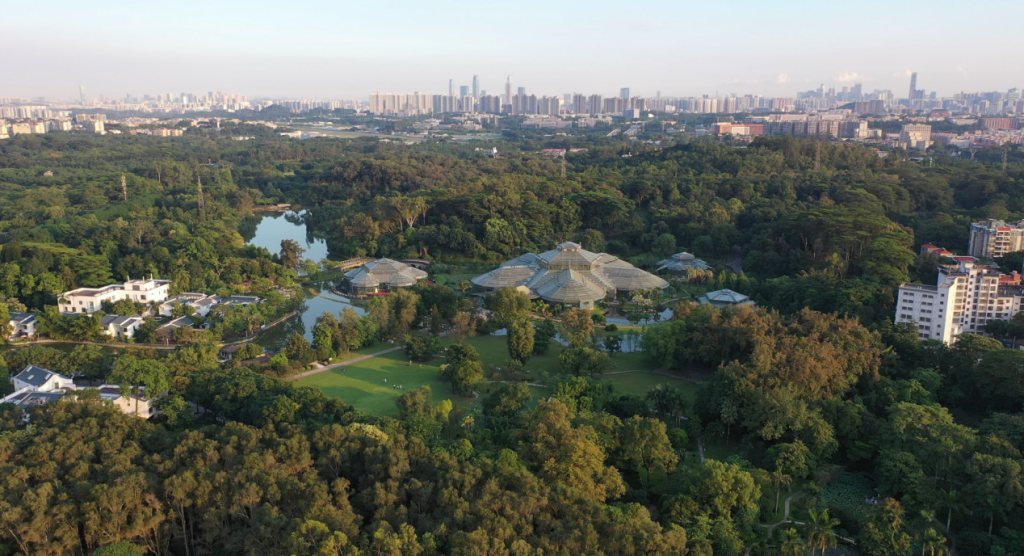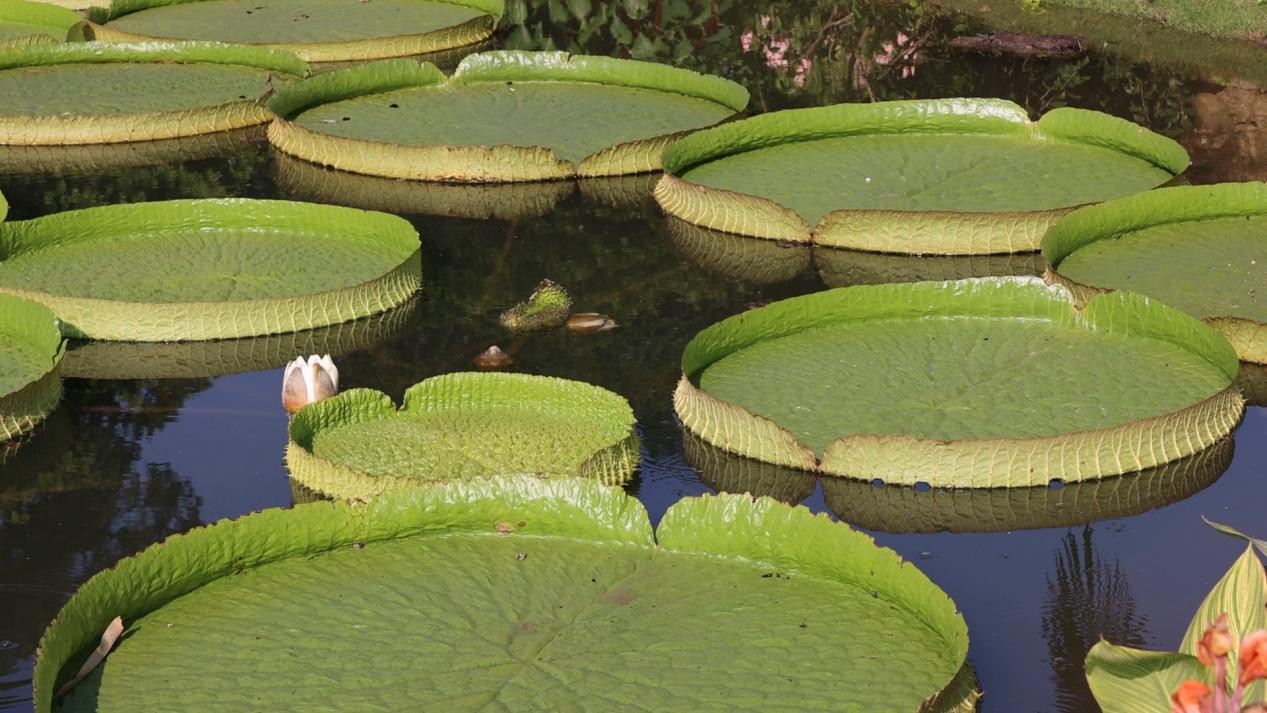Overlooking the skies of Guangzhou, four “kapok flowers” quietly bloom on the edge of the bustling city. On July 11th, with the hanging of a new sign, this place has a new name – the South China National Botanical Garden. The rooting and development of the South China National Botanical Garden is a microcosm of the continuous improvement of Guangzhou’s natural conservation system and the increasingly prominent effects of biodiversity conservation. Southern Metropolis Daily and Yue Xue Xi Client recently launched a series of popular science short videos, appreciating the charm of biodiversity from the perspective of children, and exploring the mysteries of the South China National Botanical Garden in the “Master Classroom,” telling the story of Chinese plants.
The tropical rainforest is one of the most precious resources bestowed by the Earth to all living beings on the planet. It has a hot climate throughout the year, abundant rainfall, indistinct seasonal variations, extremely rapid turnover of biological communities, and an incredibly rich diversity of species.

In the South China Botanical Garden, there is a lush and towering mysterious tropical rainforest, home to the towering Skyward Trees, the lethal Blood-letting Throat-sealers, the sudden downpour Rain Trees, the boat-like King Lotus, the enigmatic Fruits of Sour turned Sweet, the Smoke-blowing Smoke Flowers, the sturdy and magical Monkey Bread Trees, the diesel-laden Oil Nuts, and the covertly deadly Fly Trap Plants. Here, the vibrant and diverse plant life thrives in harmonious coexistence.

In the seemingly tranquil tropical rainforest, a daily drama unfolds, showcasing the competition of survival of the fittest, where every plant has its unique survival strategy. Some plants, in their quest for more sunlight and larger living space, engage in a relentless struggle for survival, where the law of the jungle prevails.
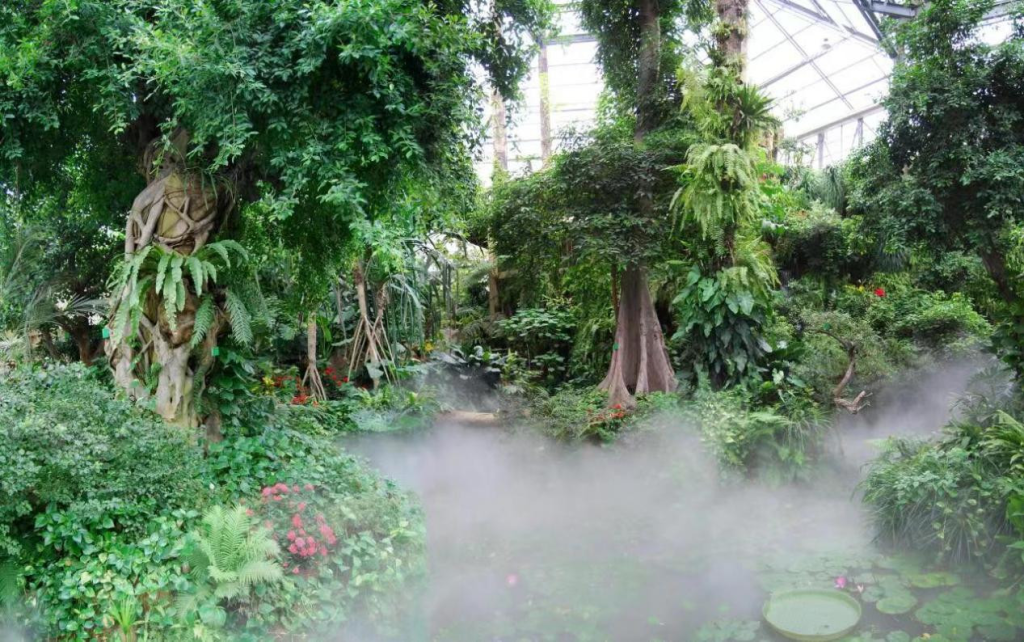
The Tropical Rainforest Pavilion brings together a diverse array of plants showcasing various survival strategies: from the predatory, towering over others; the massive vines threading through the dense undergrowth; the parasitic, cunningly usurping resources; the saprophytic, thriving in decay; the epiphytic, clinging to lofty branches; to the symbiotic, harmoniously coexisting—all presented in a dazzling array.
Known as Darwin’s plants, carnivorous plants offer careful observers scenes of tense struggles between plants and animals every day. Some come equipped with “toilets,” others carry fly swatters, while some set traps to lure unsuspecting insects. Take the Venus flytrap, for instance, with its shell-like traps closing rapidly upon any creature that triggers it twice, dissolving and digesting its prey over time.
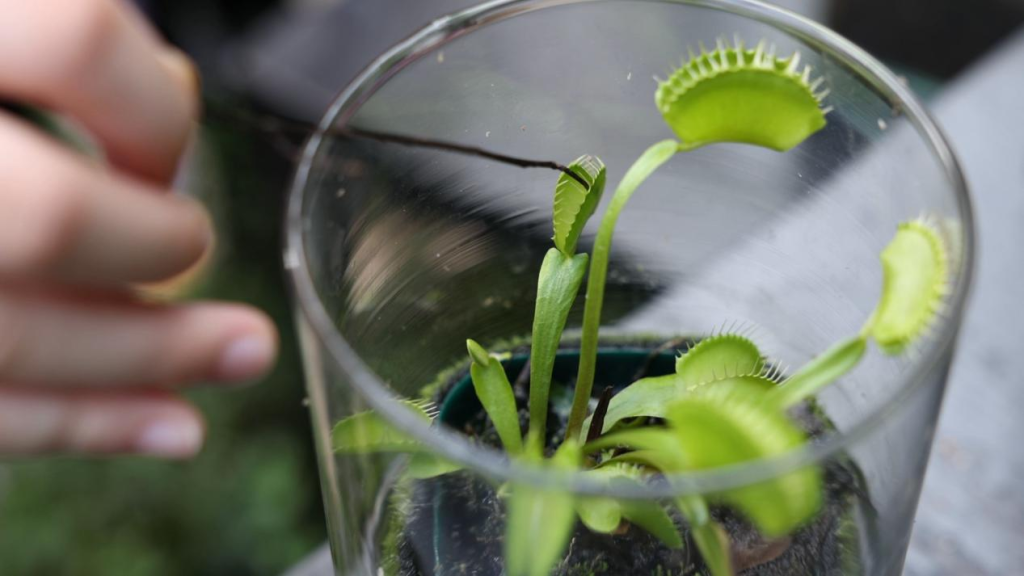
The beautiful Victoria water lily, despite its allure, bears sharp thorns on its back to deter fish from nibbling on it, earning it the moniker “goddess of change” for its three transformations throughout its life. A tree sensually entwining another is not a display of affection but a means of nutrient absorption, slowly strangling the host tree in the process, leaving behind a hollow “tree cave” eventually.
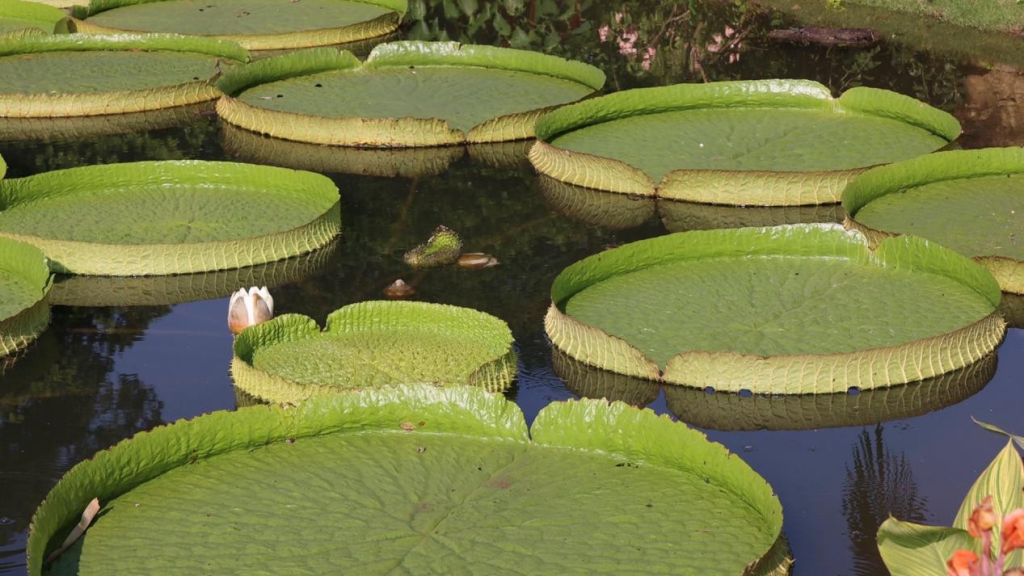
The baobab tree, native to the tropical grasslands of Africa, is renowned for its ability to store water during long droughts, evolving extremely thick trunks that serve as warehouses or even housing. It rightfully holds the title of the world’s thickest plant. Additionally, the baobab tree is incredibly long-lived, with some specimens reaching 5000 years of age!
Tropical rainforests boast a magnificent aerial garden, diverse single-tree forests, hollow trees with hidden chambers, flowers blooming on old stems, and sturdy plank roots, adding vibrant colors to the landscape.
In most natural settings, trees and their fruits typically grow on branches that are one or two years old. However, in tropical rainforests, some low-growing plants, in their quest for more sunlight and water, produce flowers and fruits on large branches or even on thick trunks. Fruits may hang directly from the trunk, a phenomenon known as “flowers and fruits on old stems,” unique to survival strategies in tropical rainforests. The cannonball tree, laden with fruits in the tropical rainforest plant greenhouse at the South China National Botanical Garden, exemplifies this phenomenon.
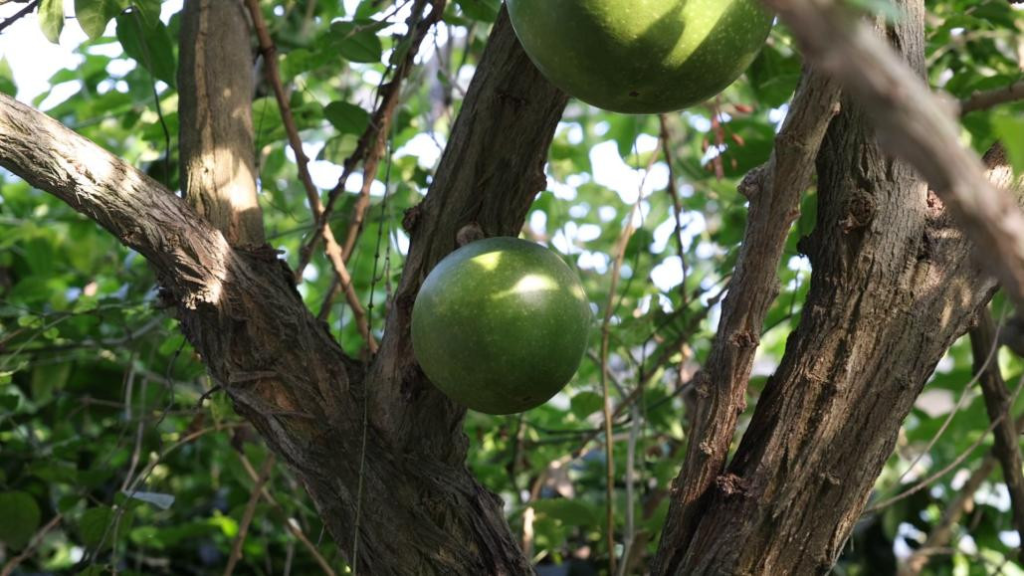
The South China Botanical Garden’s greenhouse complex houses over 1000 species of rainforest plants from around the world, creating seven major thematic areas: the Rainforest Spectacular Zone, Aquatic Plant Zone, Curious Plant Zone, Rainforest Culture Zone, Rainforest Community Zone, Central Waterfall Zone, and River Valley Rainforest Zone. Together, these areas showcase the mysterious world of tropical rainforests.
